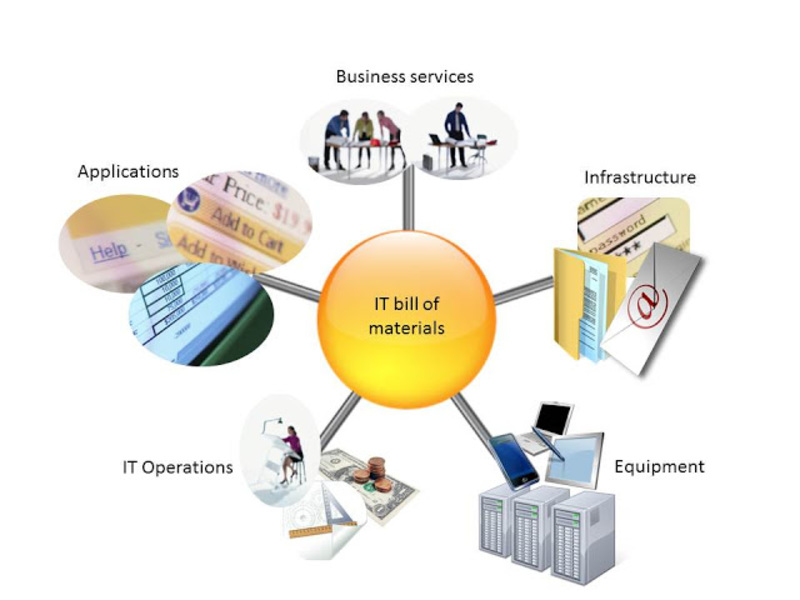Have you forgotten that before ERP there was MRP?
Recently I have been enjoying the "Pheonix ProjectThis is one of those novels of IT and, like a good Disney movie, you know it is just a story but it engages on many levels and includes strong messages. In the Pheonix Project the authors make much of the parallels between traditional manufacturing and IT operations. I am a big fan of this idea and something very similar is at the heart of the next chapter in our story about a service oriented operating model for IT.
Assembling IT services for the business
If you have been following this series so far you will know we have reached the point where we have worked out the portfolio of IT services that we need and, importantly, engaged our peers at every step. Unfortunately our services are still pretty abstract and this is where we can apply some old fashioned good sense from manufacturing. Material Requirement Planning (MRP) and Manufacturing Resource Planning (MRP II) provided frameworks for matching the flow of raw materials and production processes to demand for finished products. The multi-billion dollar Enerprise Resource Planning (ERP) industry has its roots in the number crunching needed to support these frameworks. At the heart of MRP is the concept of a bill of materials (BOM). This is a list of the raw materials which are needed to create an end product. The BOM is often a hierarchy with an end-product BOM referencing more detailed BOMs for sub-components.
For our IT operating model we need to develop BOMs for our IT services detailing the equipment and resources needed to satisfy a service request. Just as in a traditional BOM we may have a hierarchy where a customer service may rely on other supporting services. For example, applications services will rely on infrastructure services such as authentication and authorisation and all of these will rely on raw storage and compute power. We also need to take account of staff and external providers who are our equivalent of “assembly line workers” and “parts suppliers”.
In previous posts I have mentioned the need to engage stakeholders and use good engineering disciplines. The same holds true at this stage too. There will not be a simple one-to-one mapping between the underlying IT components and resources and the target IT services. Instead you will need to chose between a number of alternative ways to map between services and the underlying components and make trade-offs in conjunction with key stakeholders. For example, you will need to link purchase, service and staff costs to your BOM but if your accounting systems and historical data do not fit your ideal BOM structure you may have to compromise and develop work arounds. Similarly, if you have an existing service catalogue and reporting regime in place with service providers there may be practical limits to what you can change. Fortunately, many modelling tools (including desk top spreadsheets if your estate is relatively small) will help you bridge the gap.
From planning to results
Once your have established the BOMs for your IT services you then need to start using them. Remember that this is part of a framework to match the flow of raw materials and production processes to demand for finished products. Immediately you can use the BOMs to gain insights into current operations for example:
- Is the pattern of resource consumption and spending for IT consistent with the level demand for services?
- Are there pockets of over or under provisioned resources?
- Do charge backs and “show backs” reasonably reflect business unit consumption of IT services?
- Do business planning guidelines capture the real whole life costs of IT?
- Is the current sourcing strategy a good fit for the patterns of demand?
We can also use the BOM structure we have developed to help us refine our future operating model for IT including:
- forecasting costs against service demands at enterprise and business unit level
- matching the level of investment in service capacity to business priorities
- planning the balance between internal and external supply and developing the appropriate sourcing strategy
- anticipating the performance and cost of IT services under different possible future scenarios.
Finally, the BOM can be a powerful tool in managing on-going IT services such as:
- highlighting exceptions such as services which have deteriorating quality or increasing maintenance costs
- generating robust evidence to justify infrastructure investments
- supporting internal benchmarks so that continuous improvement efforts can be prioritised
- providing early warning of business changes which may trigger the need to draw upon reserve capacity
- understanding the potential impact of significant business changes such as mergers and acquisitions.
Setting up the factory
Armed with with your BOMs and plans for your future IT operating model you can now set about organising your resources. Since I have written some of these chapters out of sequence you can look at my post on organising your service oriented IT function now. Alternatively, let me know what you think of the story so far. In the meantime I will get working on the next step which will cover the financial aspect of the operating model.

